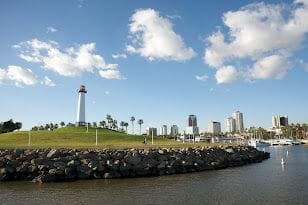Boating enthusiasts around the globe can agree on one thing: the shoreline forms an essential part of their experience. An intact and well-protected shoreline guarantees not just an enjoyable experience but one that is also safe and sustainable for all to enjoy. Shoreline protection comes with varying strategies that can range from natural approaches to artificial interventions. These methods aim to prevent erosion, limit pollutants, and maintain a robust ecosystem. This article delves into the importance of shoreline protection for boaters, its benefits, and some common shoreline protection strategies.
The Role of Shorelines in Boating
Buffer between Water and Land
Shorelines provide a natural buffer between water and land, preventing the erosion of soil and protecting the surrounding ecosystem. This buffer maintains excellent water quality for boating activities and supports the natural flora and fauna in the area.
Stability for Launch Sites
The shoreline provides stability and structure for boating facilities such as boat ramps, docks, and piers. These structures depend on solid ground to remain functional and safe. Shoreline erosion can lead to unstable surfaces, causing significant safety risks to boaters as they launch and dock their vessels.
Navigational Safety
Shoreline protection ensures that shorelines remain intact and clearly visible for navigational purposes. This can be especially true during times of high water, when erosion can lead to shoreline collapses, causing unexpected changes in water depth and aquatic hazards for boaters.
Aesthetic Appeal
Boating experiences are enhanced by the scenic beauty of the surrounding environment. Shoreline protection preserves the natural landscape, contributing to the overall aesthetic appeal of boating destinations.
Benefits of Shoreline Protection
Environment Conservation
Shoreline protection maintains a healthy local ecosystem by preserving habitats for fish, birds, and other wildlife. This biodiversity helps create a thriving ecosystem that supports both boating and non-boating related activities.
Enhanced Water Quality
A protected shoreline regulates the flow of sediment, pollutants, and other potential contaminants. This contributes to cleaner, clearer water that is enjoyable for boating and less harmful to aquatic life.
Long-term Sustainability
Shoreline protection measures can mitigate the effects of climate change, such as rising sea levels and more frequent and severe storms. These protective measures ensure that boating destinations will remain enjoyable and accessible for both current and future generations of boaters.
Common Shoreline Protection Strategies
Natural Approaches
Vegetation Planting
Planting native vegetation along the shoreline – such as grasses, shrubs, and trees – can help stabilize the soil, reducing erosion while also filtering contaminants and pollutants from runoff. Vegetation can also provide shade and habitat for fish and other aquatic life, promote biodiversity, and reduce the impact of wave energy along the shoreline.
Beach Nourishment
Beach nourishment involves the addition of sand, gravel, or other natural materials to the shoreline to replenish areas affected by erosion. The placement of materials is carefully planned to mimic the natural shape and slope of the shoreline, promoting long-term stability and reducing the damage caused by storm surges and waves.
Artificial Interventions
Riprap
Riprap is a type of shoreline armoring created with large, angular stones positioned along the shoreline to dissipate wave energy and reduce erosion. This method typically involves placing a layer of filter fabric beneath the stones to prevent sediment from washing away.
Seawalls
Seawalls are structures built parallel to the shoreline, made from materials such as concrete, steel, or timber. These walls deflect and absorb wave energy, reducing the force exerted on the shoreline and preventing erosion.
Breakwaters
Breakwaters are low walls constructed offshore to lessen the impact of waves on the shoreline. They can be made from rocks or other materials and are typically submerged or slightly above the water’s surface. These structures can effectively reduce the impact of waves on the shoreline, protecting coastal facilities and habitats.
Shoreline protection is critical to ensure the long-term sustainability and enjoyment of boating activities. By implementing measures to protect our shorelines, we not only preserve local ecosystems but also contribute to cleaner, safer, and more accessible boating environments. While a mixture of natural and artificial interventions may be necessary, working together to maintain the health and beauty of our shorelines will benefit boaters and marine life alike for generations to come.


